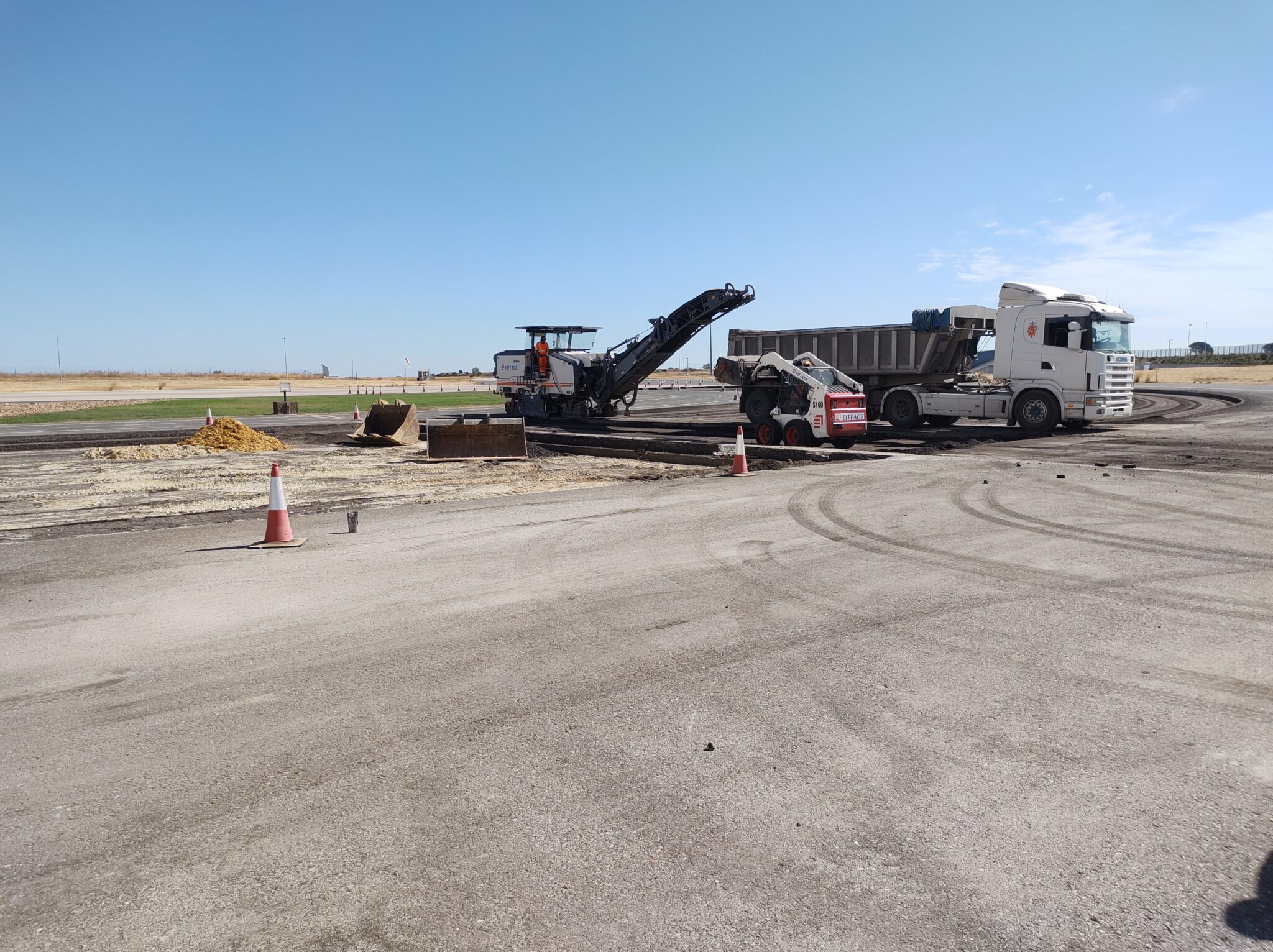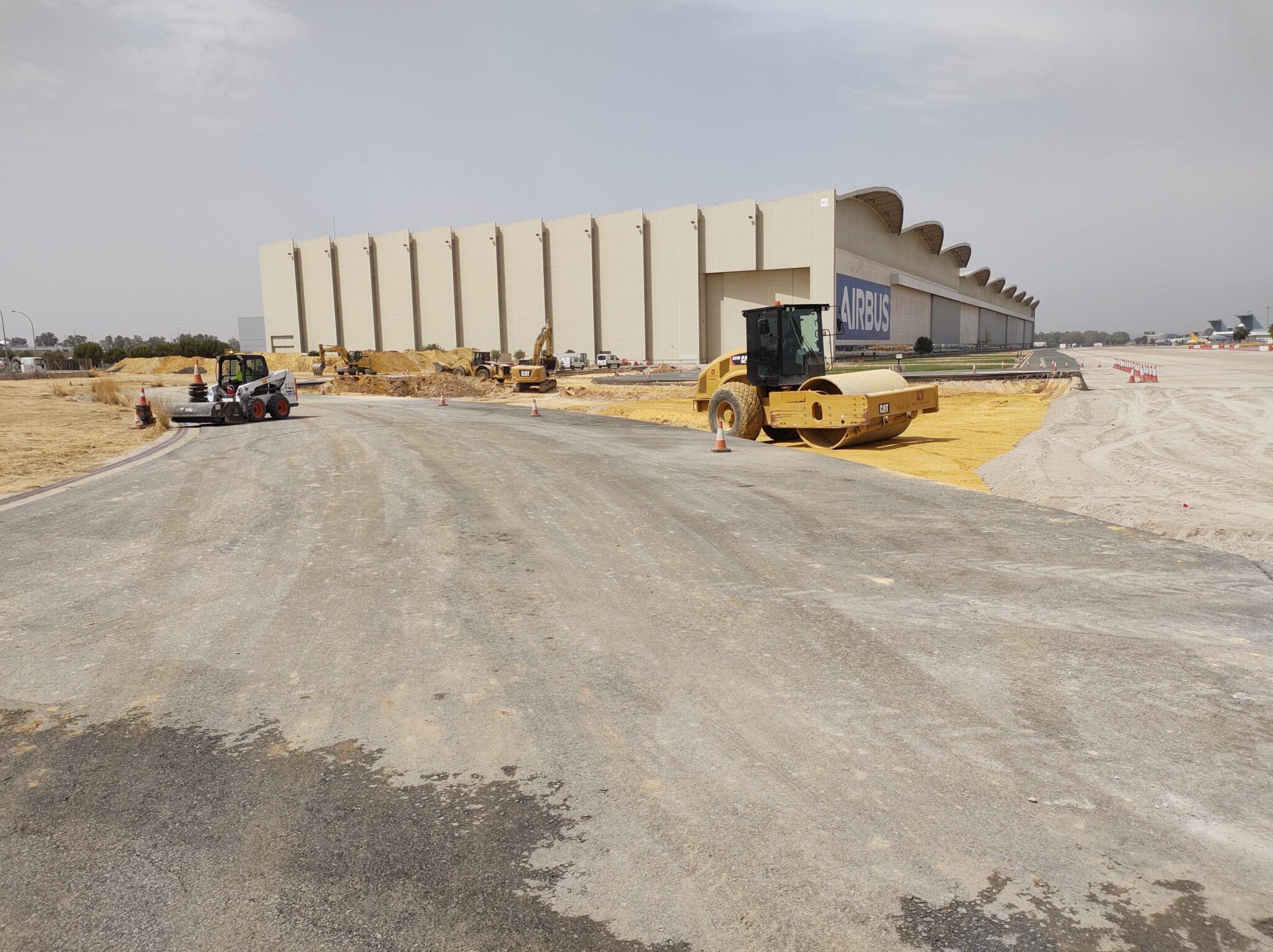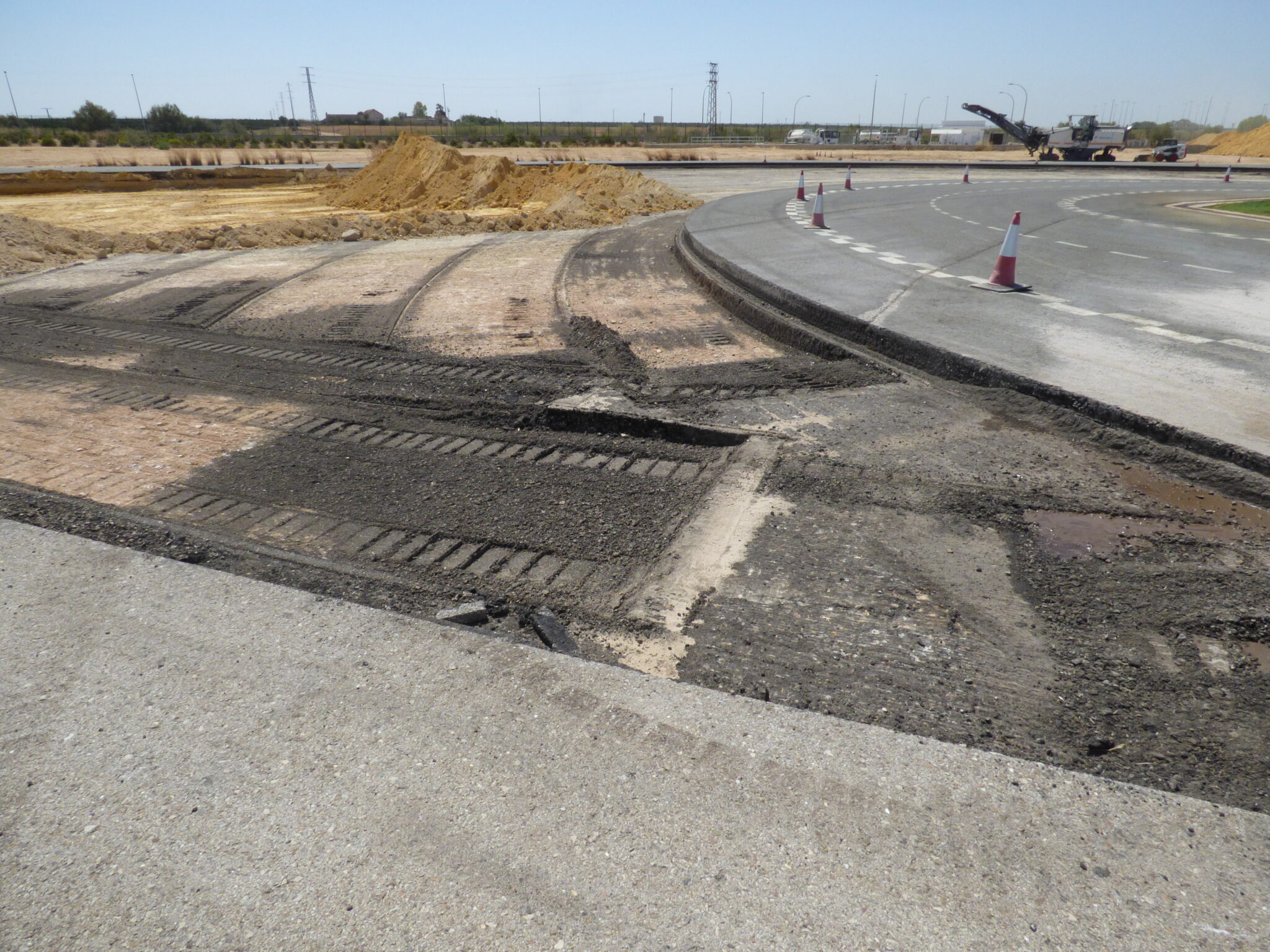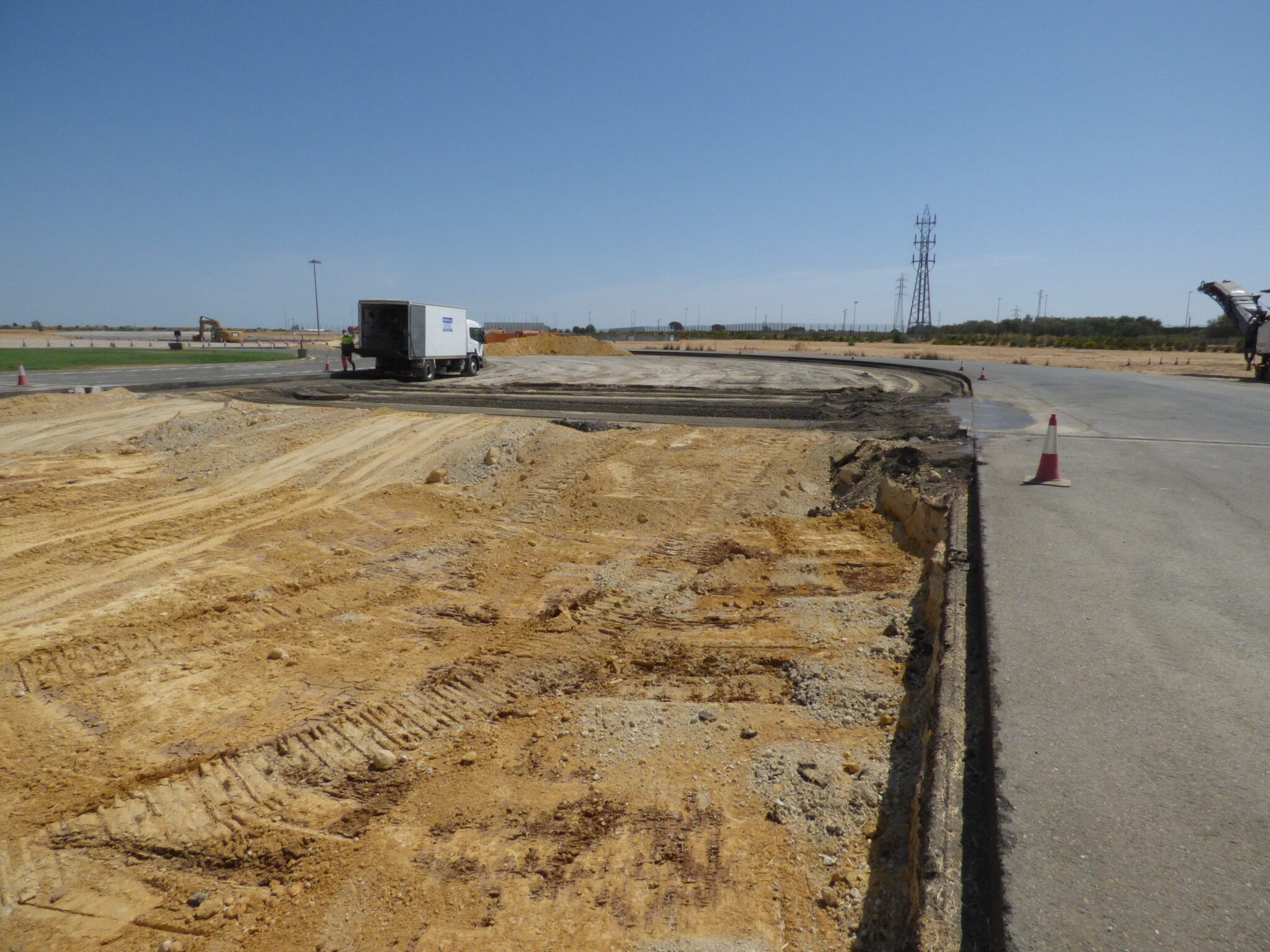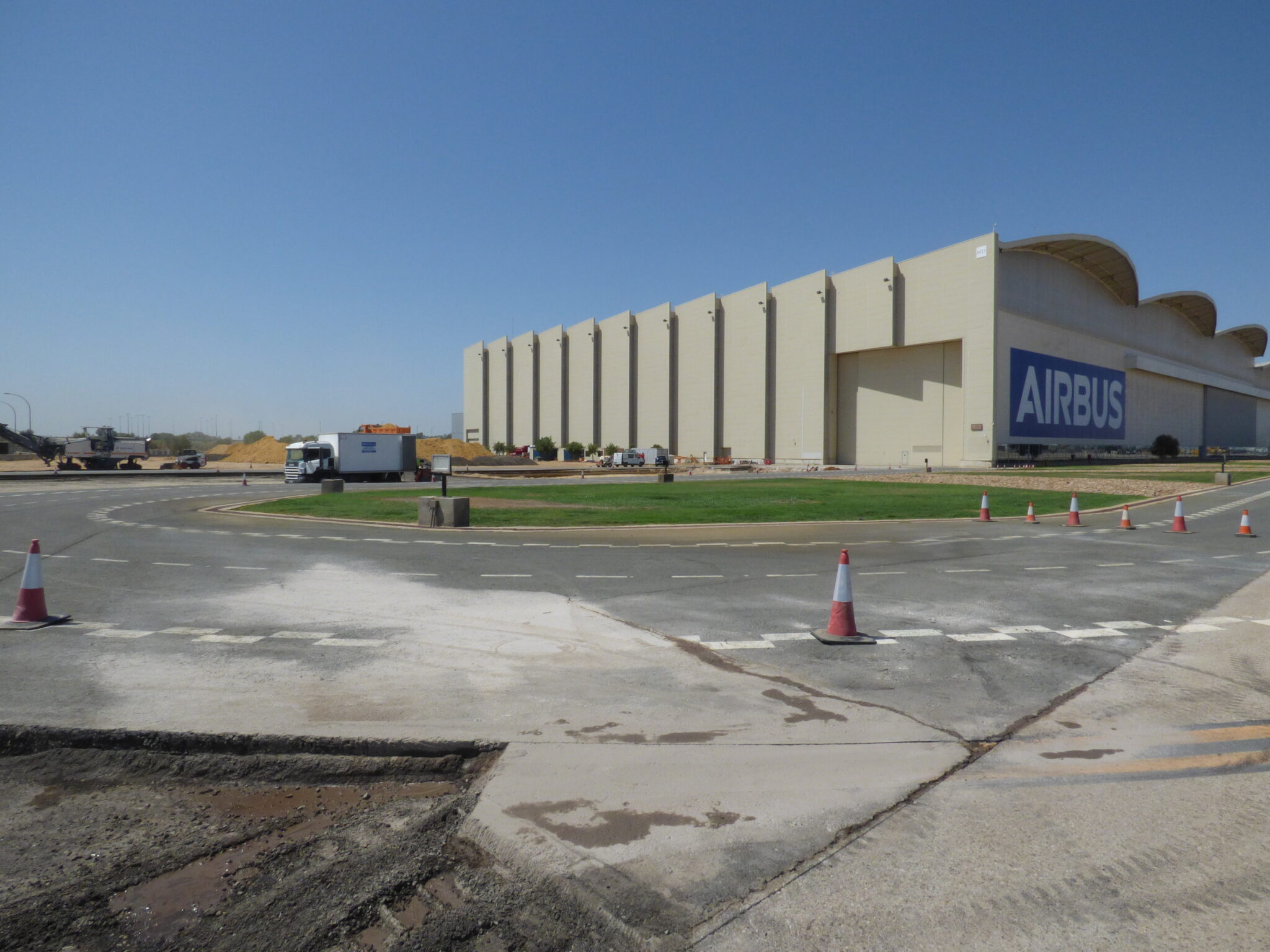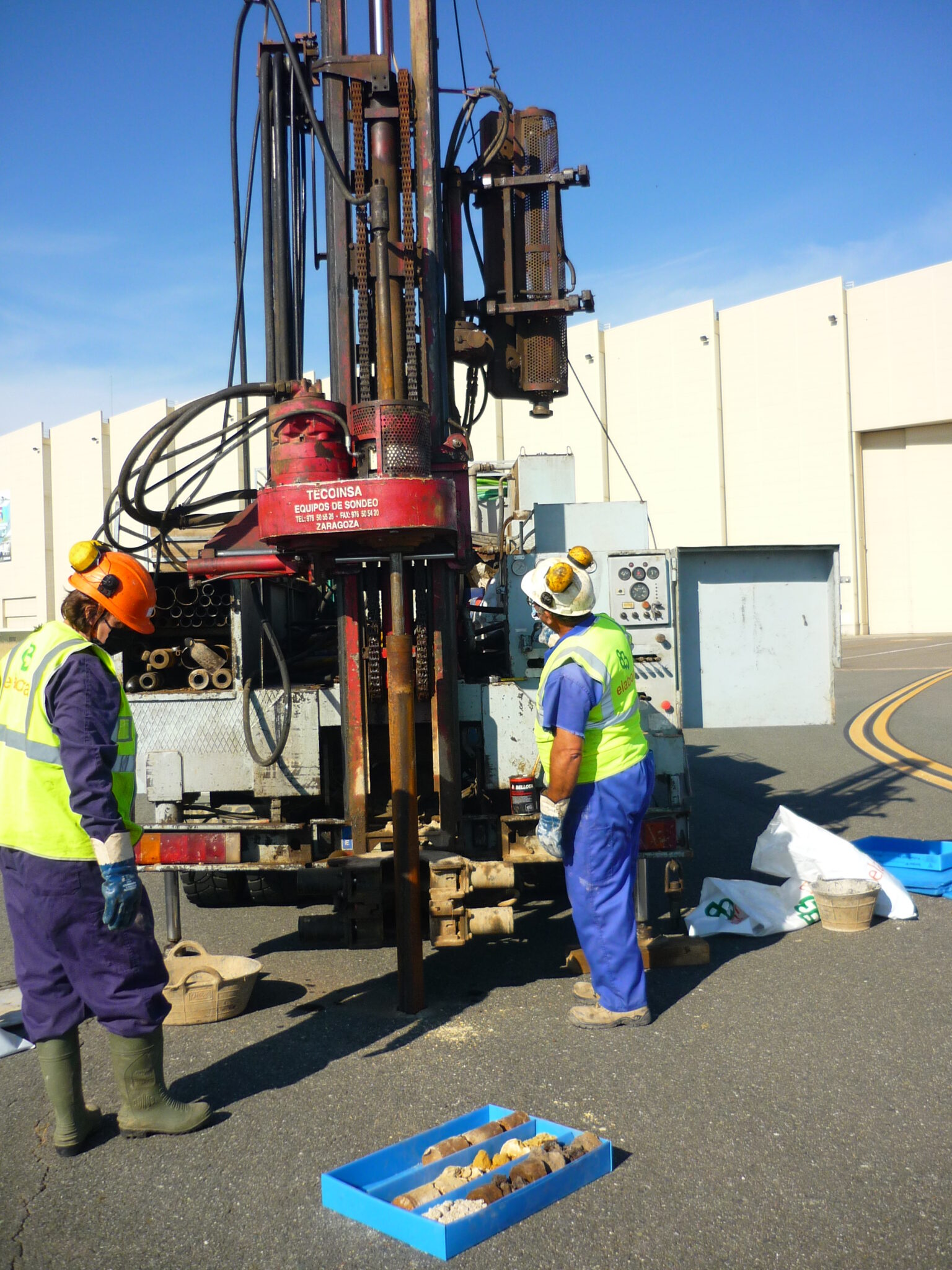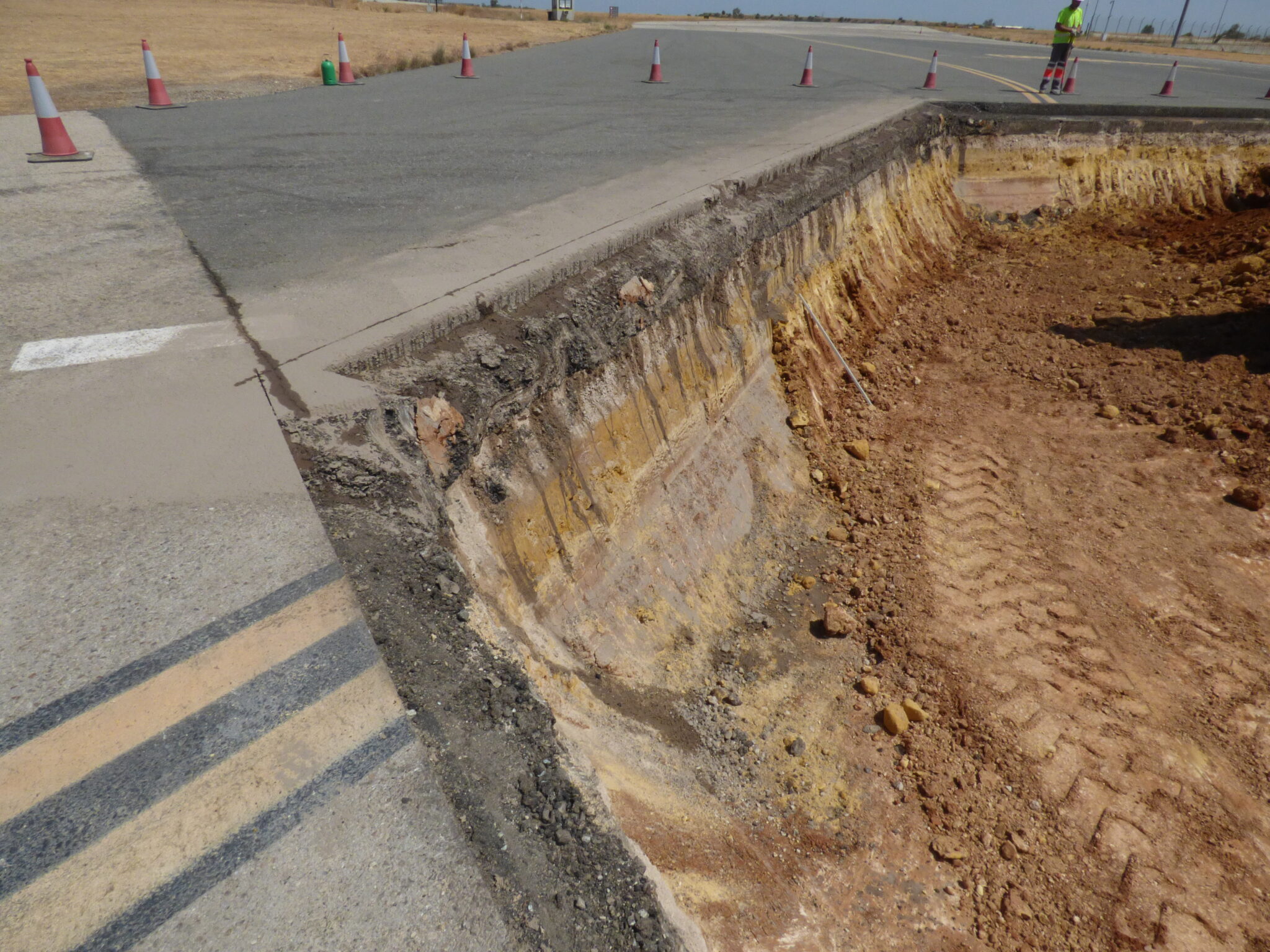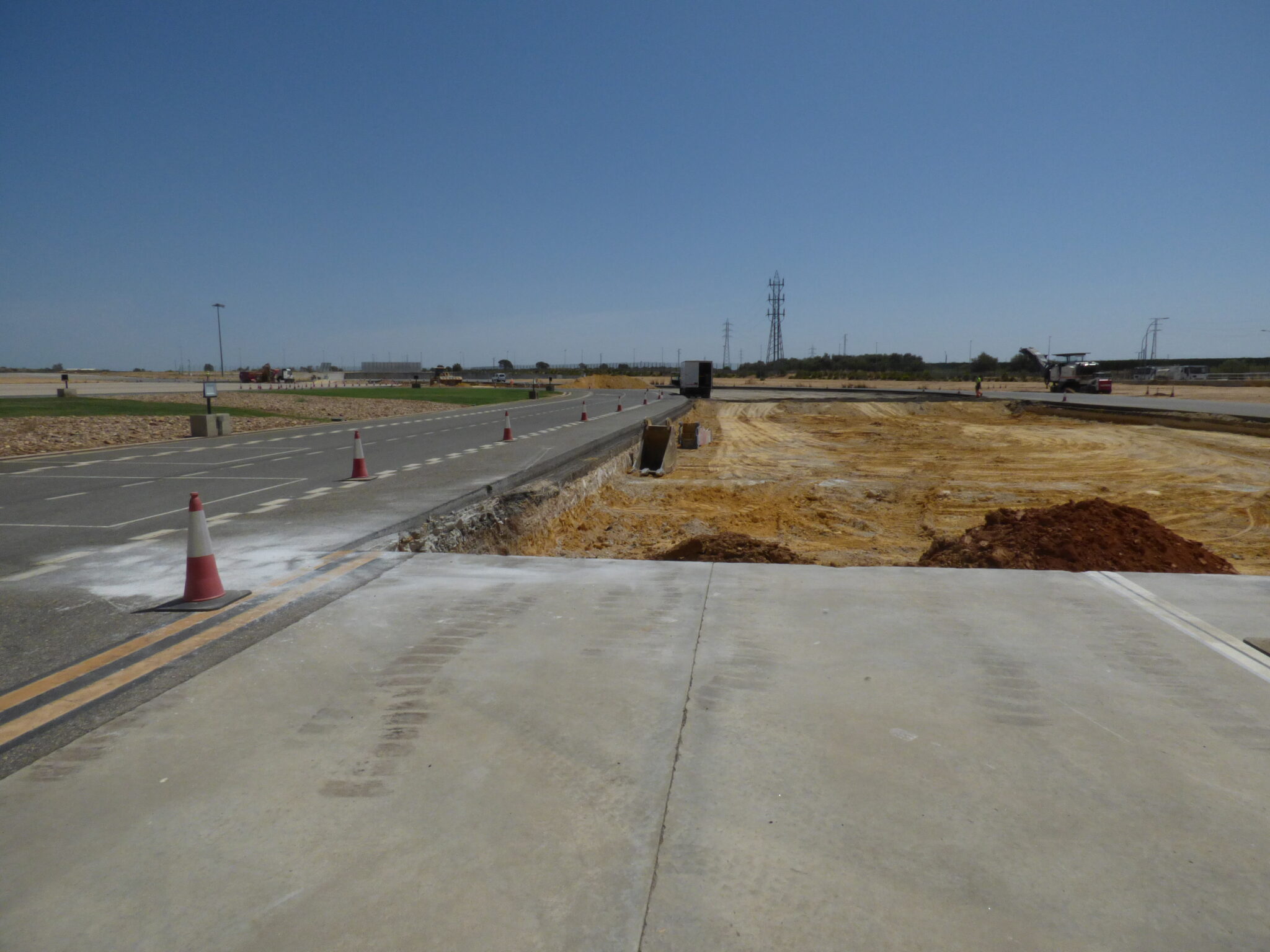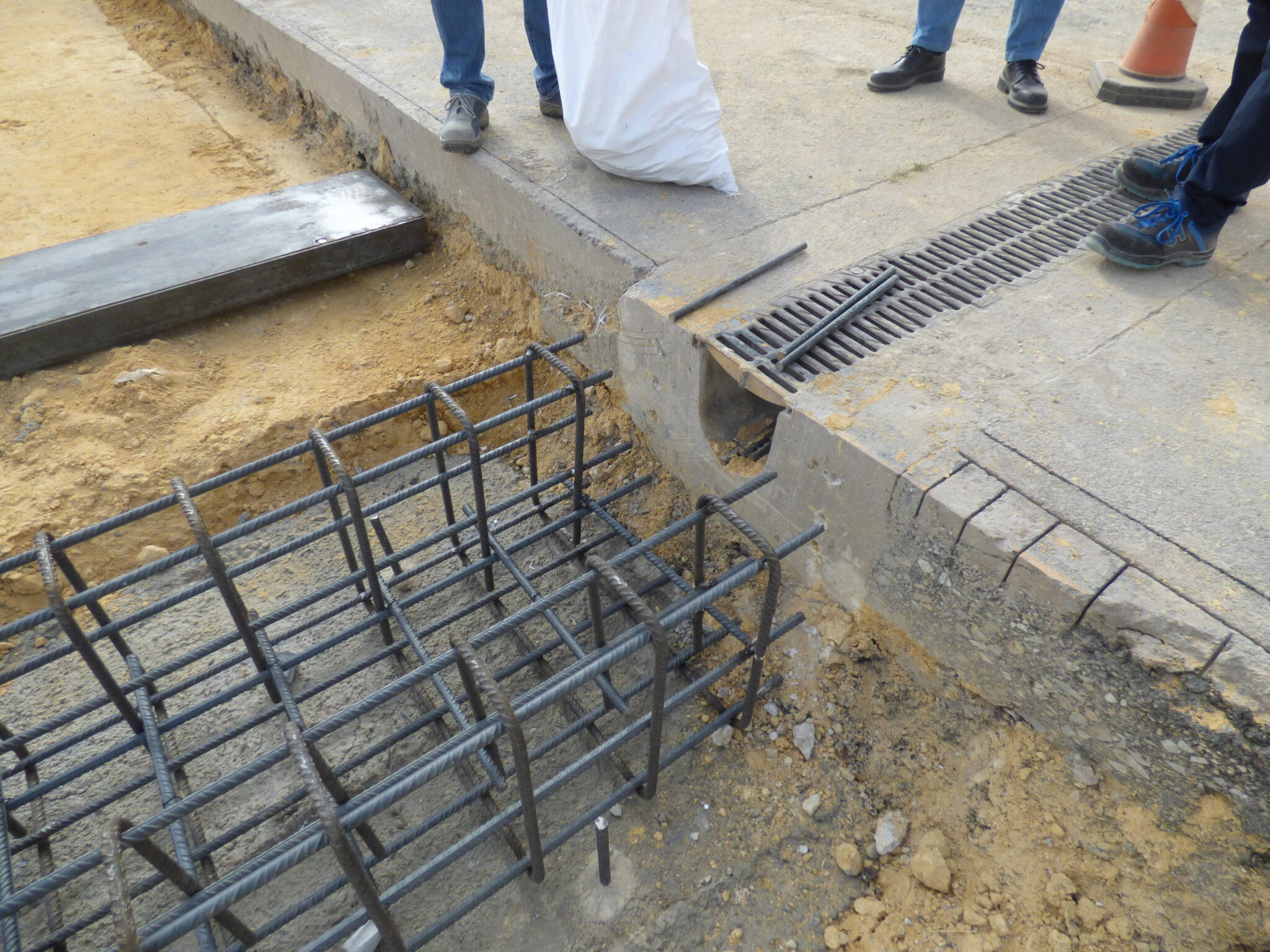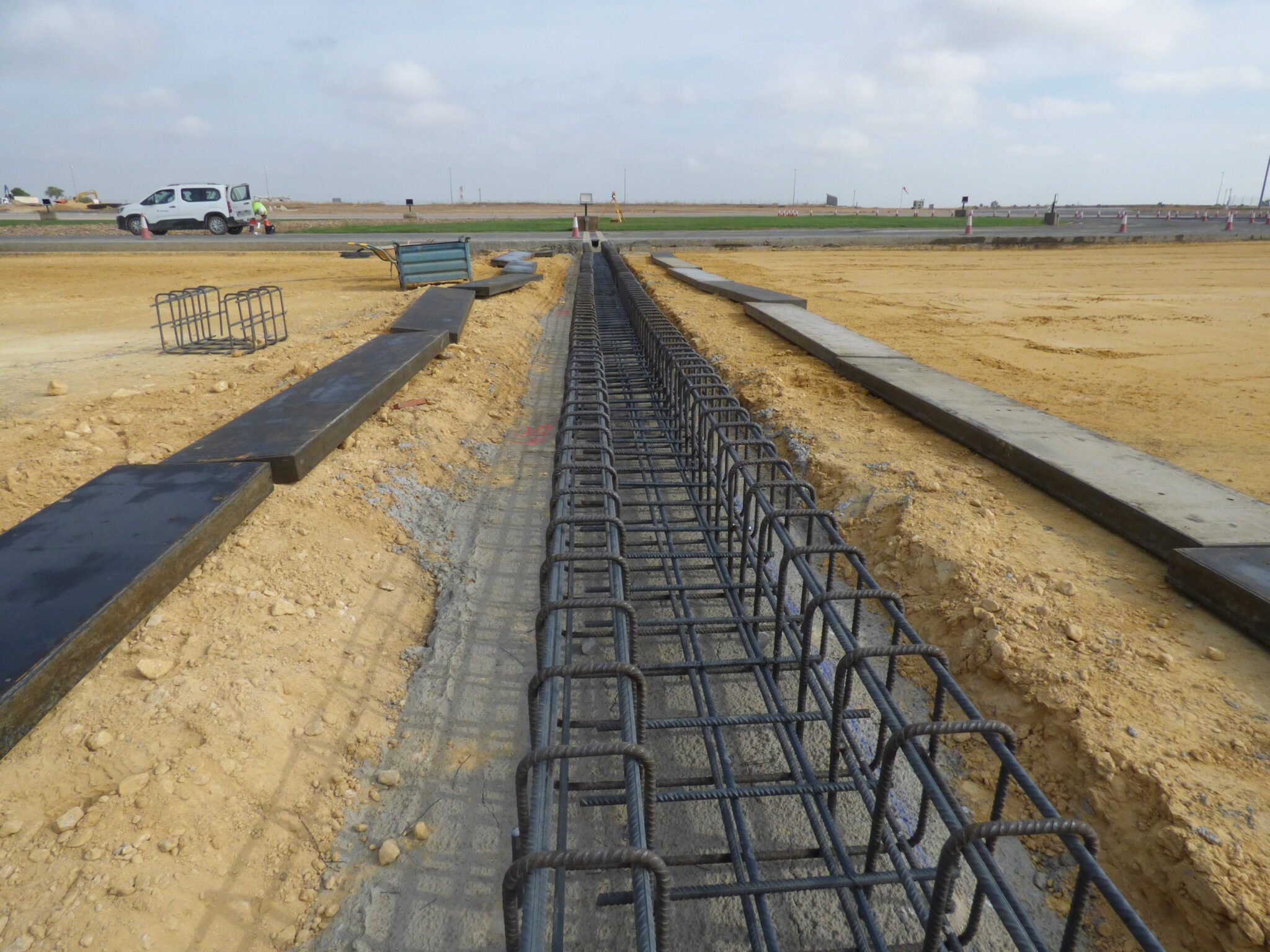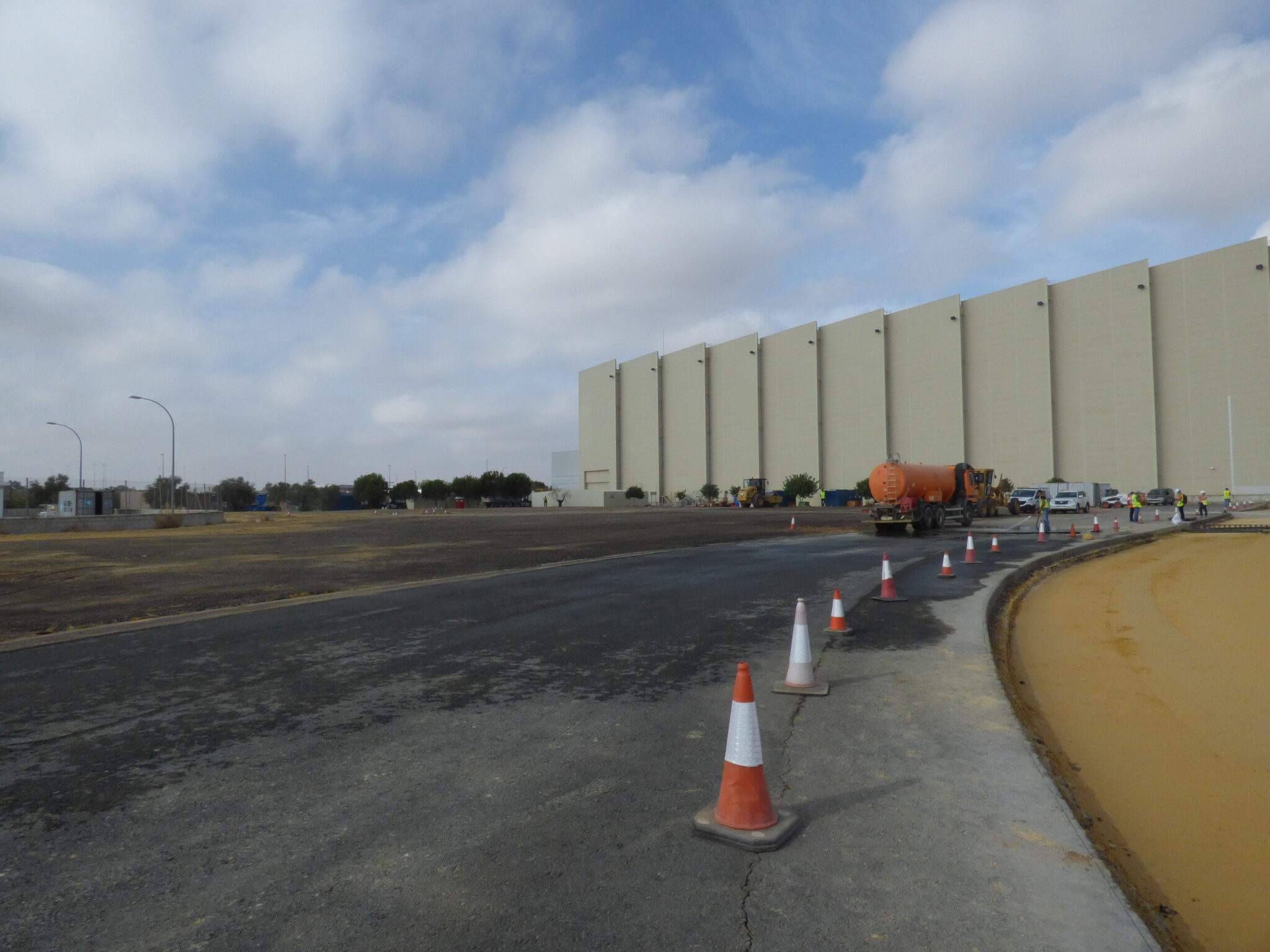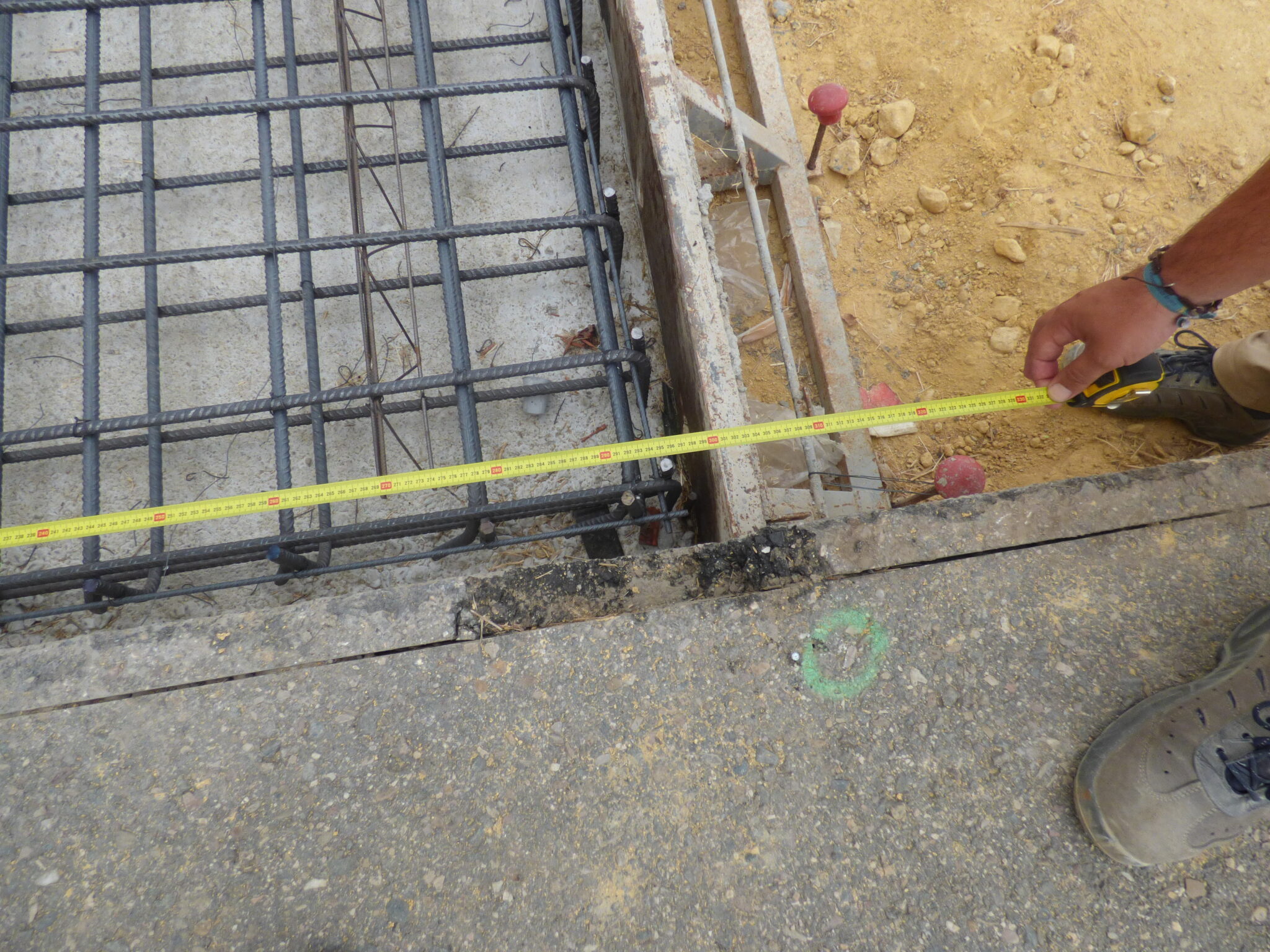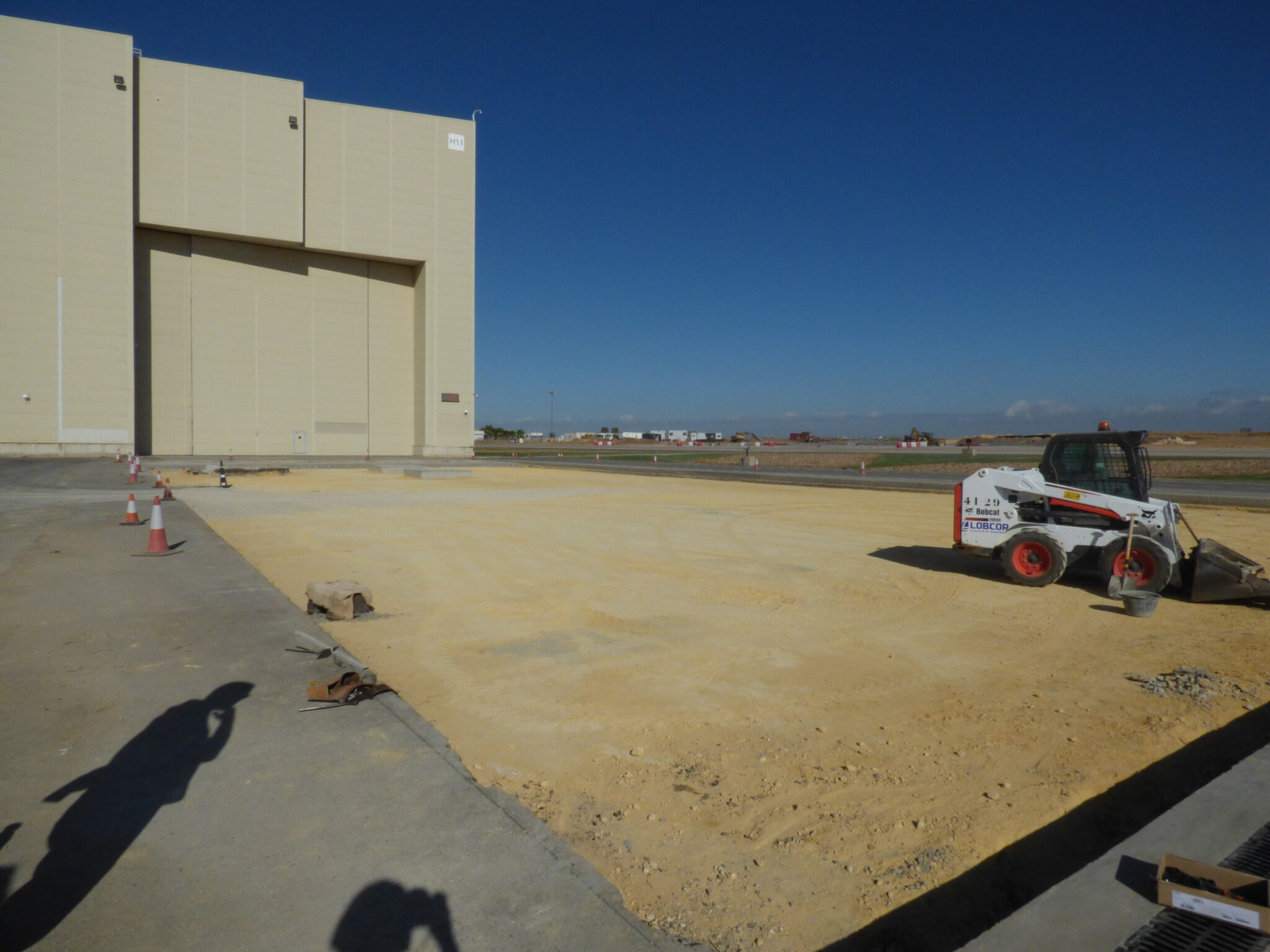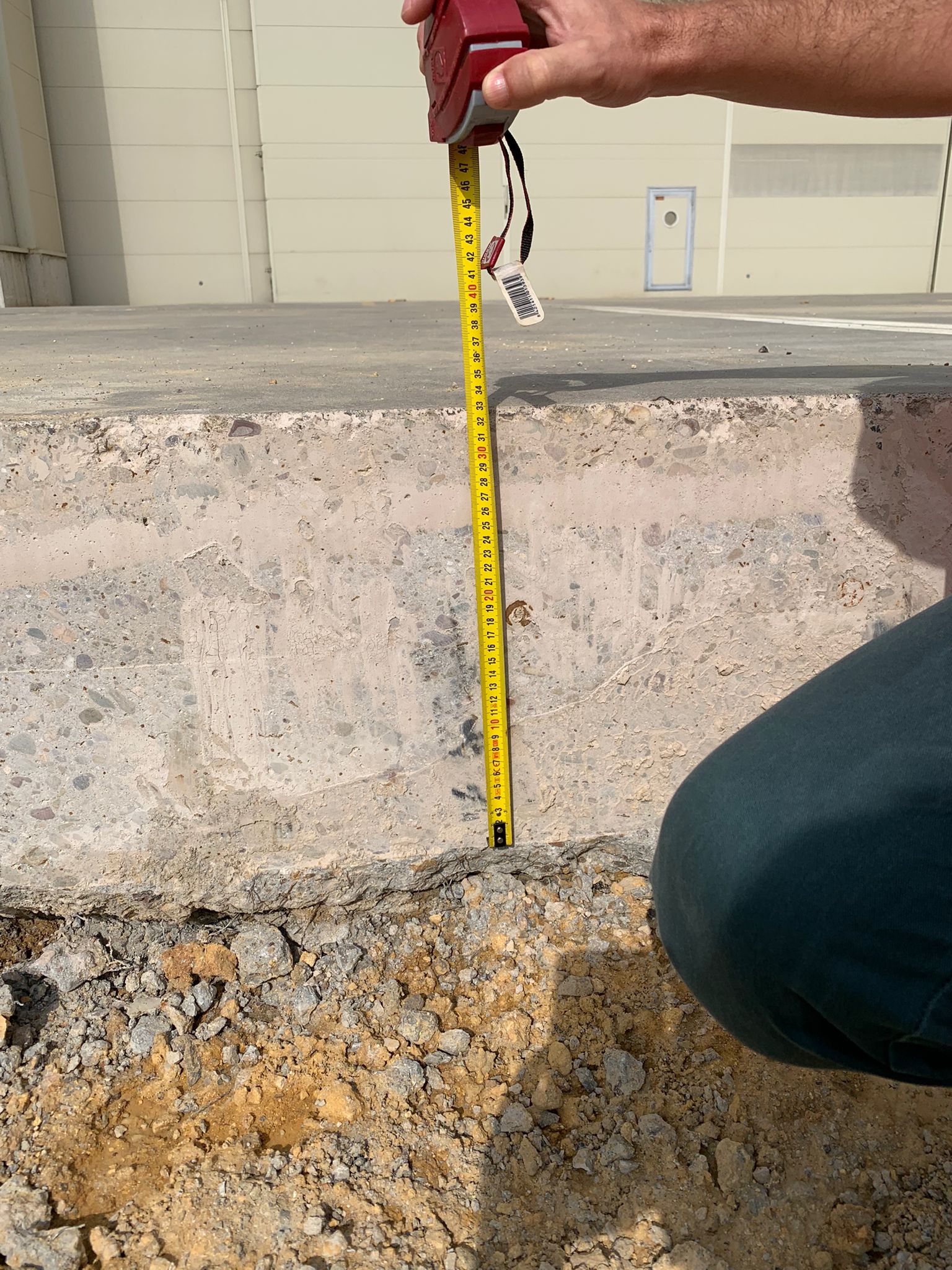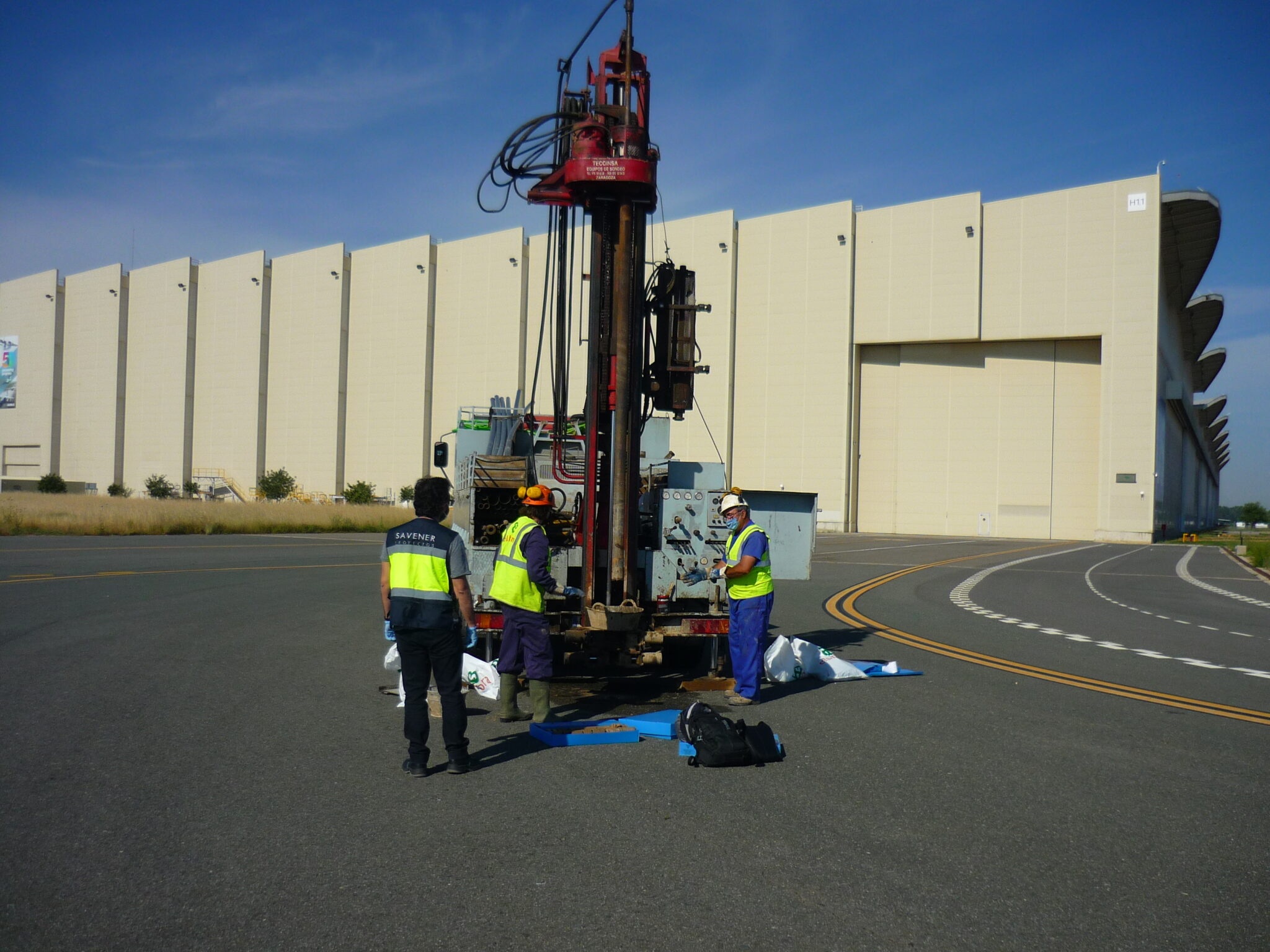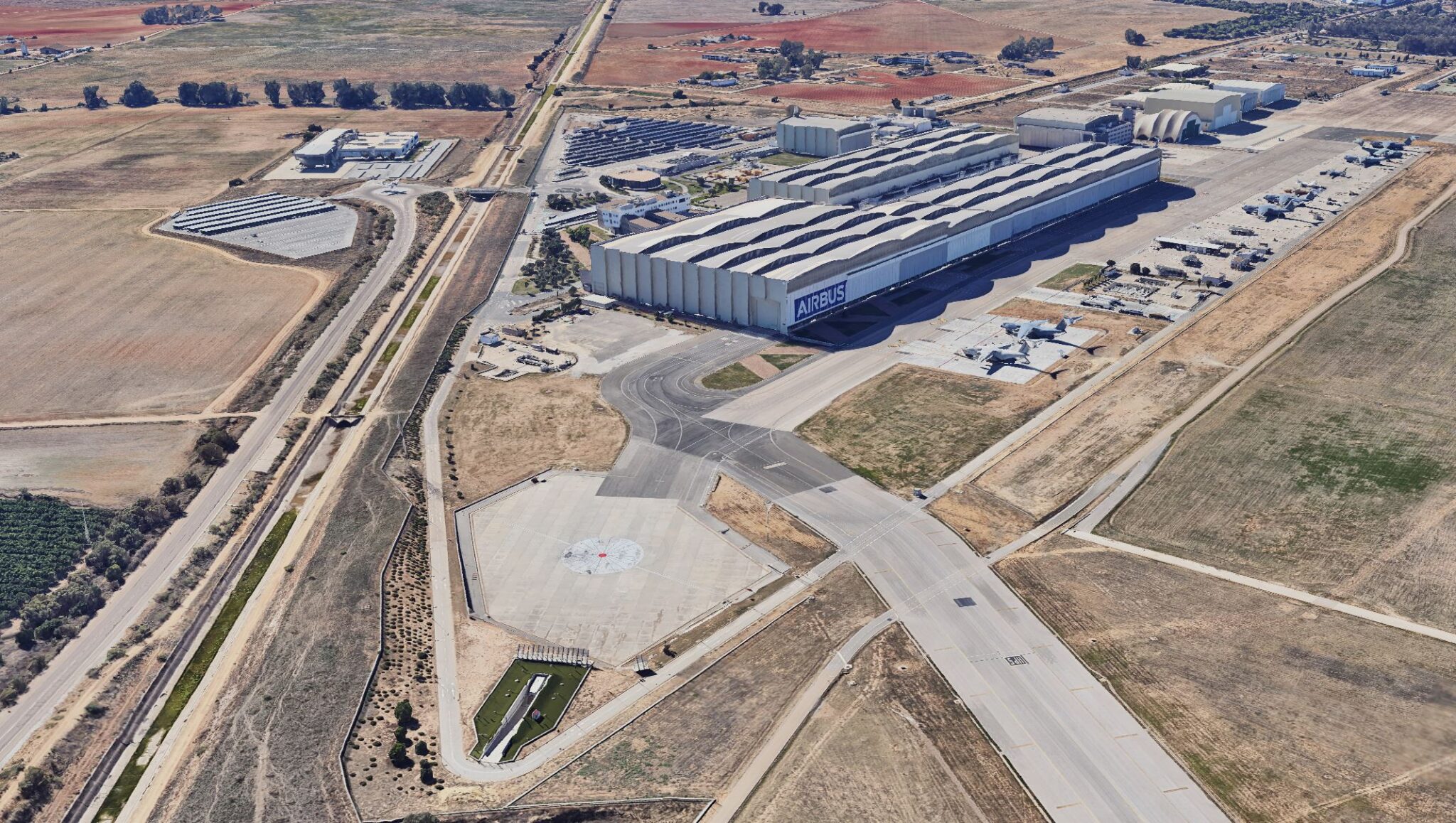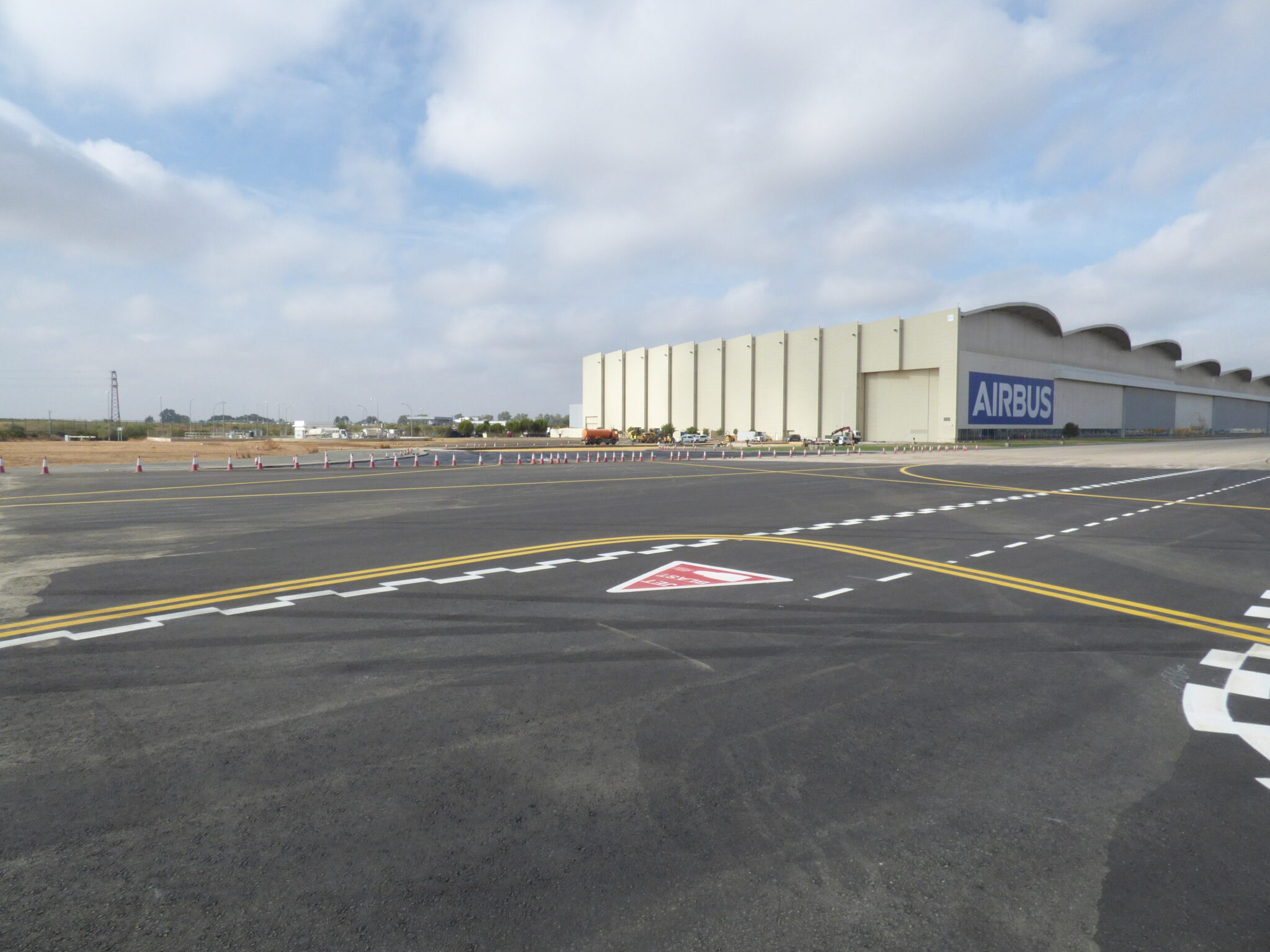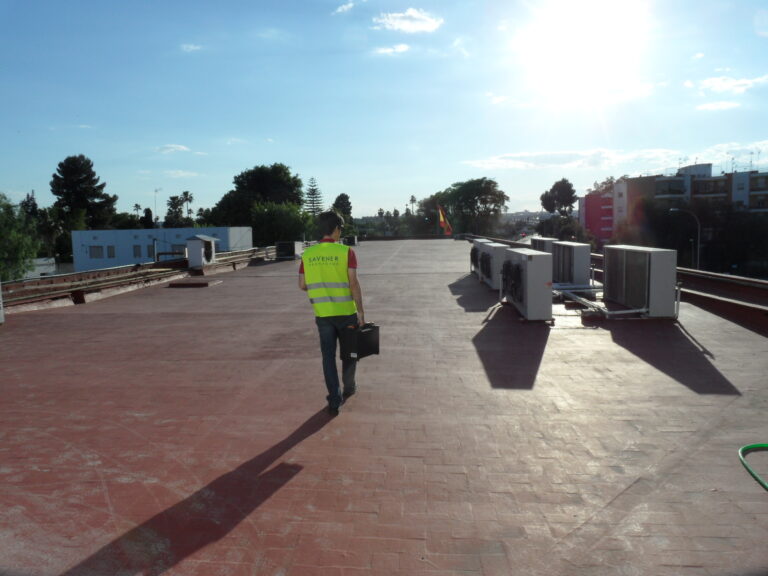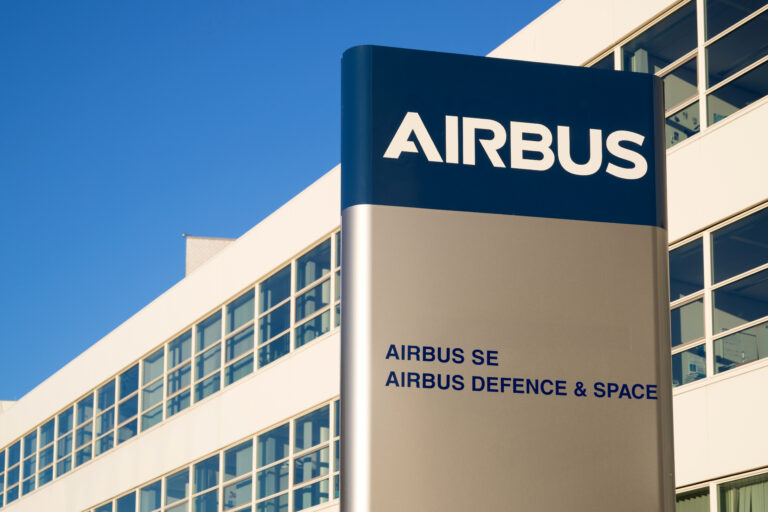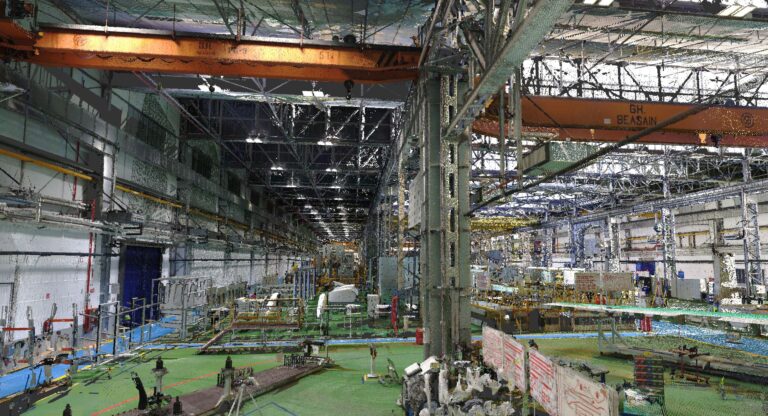- Location: Factory San Pablo South East of H1.1 Seville
- Main Data: 15.747m²/ 9,480m3
- Technology: Penetrometers, Drilling, Concreting, Trowelling, Structural reinforcement, Drainage, Asphalting, Signalling, Guiding
- Client: Airbus
The area subject to the proposed intervention is located within the AIRBUS factory, classified as a Singular Industry (IS) by the PGOU of Seville and located in the AIRBUS DEFENCE & SPACE San Pablo Sur Factory, Seville.
The project is located in the northeast area, in the area known as Taxiway Beluga, corresponding to the connection between the flight line platform of the factory with the parking platform of the Beluga, located in the northeast corner of Hangar H1.1. It is therefore a pavement action on the Air Side, considered as an intervention exclusively on the current grade, consisting of improving the current pavement due to the pathologies detected by different previous studies carried out by Airbus.
The intervention area was destined for the same use as the one it is now destined for after the works, due to the fact that the project deals with the replacement of the current pavement and pavement packages with others of greater load-bearing capacity.
This aircraft, after landing at Seville airport, travels to the factory, where it arrives autonomously. On entering the factory, it is towed forward to the unloading position, which consists of introducing the nose into the hangar to unload the material it is transporting.
The departure is always backwards and towed, until it faces the exit to the airport, where it becomes autonomous and rolls under its own power.
Due to the fact that the XL version of the Beluga is heavier than the ST version, Airbus carried out a series of studies and pathological tests with Savener on the area on which the aircraft rolls, and pathologies were detected in the pavement after more than ten years of use, which led to the prediction of an increase in the weight of the aircraft operating on this pavement and the pathologies could be exponentially increased.
Therefore, the purpose of this project was to define the new pavement package that can support the weight of the Beluga XL, as well as the associated works and facilities affected by the works.
The works consisted of the demolition of the existing flexible pavement in the resistant area of the pavement (i.e. between the current platform boundary markings).
As part of this demolition work, certain infrastructures were affected which required specific action:
– Inner rainwater gutter
– Pit and existing earth target
– Beluga ST support footing
– Beluga XL footing,
– Transition slab between the unloading platform and the new taxiway.
After demolition, a new pavement package was laid as defined in the project. The slopes and rainwater drainage were to be maintained as they were after completion of the works, as this was not part of the scope of this project.
